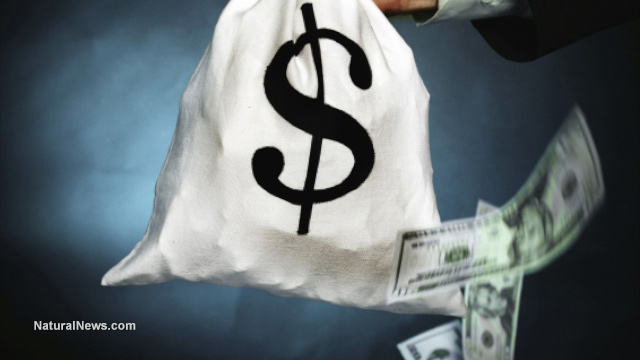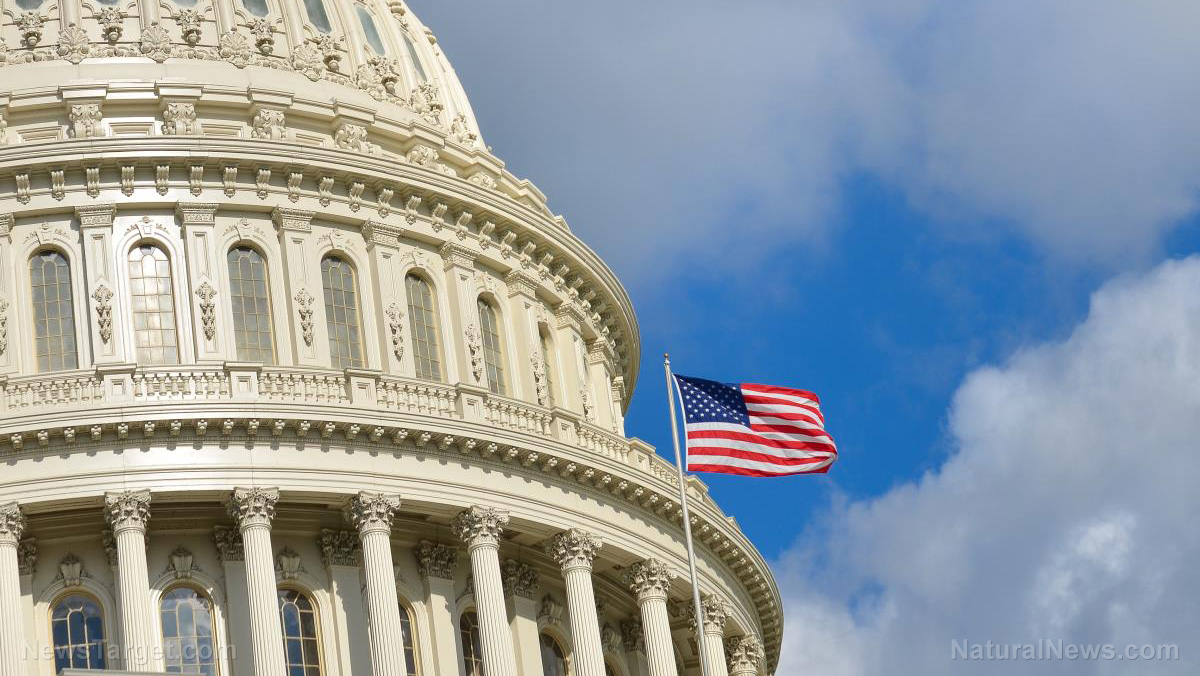The mother of all crashes is coming in April 2023
12/09/2022 / By News Editors

The signs of the coming economic contraction are already both present and obvious, but the overall economic picture probably won’t be acknowledged in the mainstream until the situation becomes much worse.
(Article republished from BirchGold.com)
It’s a problem that arises at the onset of every historic financial crisis – mainstream economists and cable-news commentators deliberately mislead the public about the severity of the challenges and the chances of recovery. They feed their audiences false reassurances in the hope of lulling people back to sleep.
Even now with inflation pummeling the average American family, they tell us that there is nothing to worry about. The Federal Reserve’s “soft landing” is on the way.
Consider the Great Financial Crisis
I remember in 2007, right before the epic derivatives collapse that took down Lehman Brothers and Bear Sterns, when media pundits were applauding the U.S. housing market and forecasting even greater highs in both sales and in valuations. A “permanent plateau,” which would generously spread wealth across the nation.
I had only been writing economic analysis for about a year at the time, but I remember thinking that all this overt optimism felt like compensation for something. It seemed as if they were trying to pull the wool over the eyes of the public in the hopes that, if people just believed hard enough that all was well, then the fantasy could be manifested into reality. Science has even developed a term for this: the Tinkerbell effect.
Unfortunately, that’s not how economics works.
Here’s some free advice most people learn the hard way: the more your financial future depends on hope, rather than basic economic principles, the more likely it is to disappoint you.
The fundamental forces that make markets, supply and demand, debt and credit, money velocity and inflation – these cannot be ignored.
If the system is out of balance, it will fall apart and there’s nothing anyone, including central banks, can do about it. (In fact, there are times when they deliberately engineer collapse – though they don’t call it that.)
Here’s how today’s economy is out of balance
This is the situation we are currently in today as 2022 comes to a close. The Fed is in the midst of a rather aggressive rate hike schedule, trying to wrestle today’s inflationary crisis into submission. The absurd part of this whole thing? Today’s inflation was deliberately created by the Fed, through years of fiat stimulus measures.
It’s sort of like the plot of Mary Shelley’s Frankenstein. The brilliant scientist creates a masterpiece – a living, breathing superhuman! But the creature doesn’t follow its master’s orders, so he spends the rest of the book trying to kill it.
So far, higher interest rates are not bringing prices down significantly, nor are they slowing manic stock market speculation. Easy money has been entrenched for far too long, which means a “hard landing” (which is what Fed officials call a collapse) is the most likely scenario.
Like Frankenstein’s monster, the Fed’s creation is much stronger than expected – and isn’t going down without a real battle.
In the early 2000s the Fed had been engaged in artificially low interest rates which inflated the housing and derivatives bubble. In 2004, they shifted into a tightening process. Rates in 2004 were at 1% and by 2006 they rose to over 5%. This is when cracks began to appear in the credit markets, with 4.5% – 5.5% being the magic cutoff point before debt became too expensive for markets to keep up the charade. By 2007-08 the nation had witnessed an exponential implosion of credit and debt – which then totally collapsed, setting off the biggest money printing bonanza in U.S. history to save the global banking system. At least for a while.
Now, remember, despite their essential role in the nation’s economy, the Fed can only really do two things:
- Expand or contract the money supply (print or destroy dollars)
- Make debt cheaper or more expensive (lower or raise interest rates)
That’s it. Those are the limits of monetary policy.
The other major component of economic health, fiscal policy (how a nation chooses to invest or spend its money), well, that’s not a Fed problem.
Since nothing was actually fixed in the wake of the Great Financial Crisis of 2007-08, I will continue to use the 5% funds rate as a marker for when we can expect to see the next major contraction.
But this time is different.
The Fed does not have the option to flood the economy with more freshly-printed money, not without immediately triggering a stagflationary spiral. When this happens, only those who’ve had the foresight to invest in physical precious metals, especially gold and silver, will be able to avoid the pain of watching their purchasing power wiped out in a matter of months.
I think that, this time, the Fed wants a crash.
As I noted in my article The Fed Is Taking The Punch Bowl Away – But The Inflation Crisis Will Continue To Grow, published in May:
Mainstream financial commentators want to believe the Fed will capitulate because they desperately want the party in stock markets to continue, but the party is over. Sure, there will be moments when the markets rally based on nothing more than a word or two from a Fed official planting false hopes, but this will become rare. Ultimately, the Fed has taken away the punch bowl and it’s not coming back. They have the perfect excuse to kill the economy and kill markets in the form of a stagflationary disaster THEY CAUSED. Why would they reverse course now?
The U.S. economy must be crushed
The central bank has a global agenda that requires the decline of the American economy. They are getting exactly what they want and they are perfectly aware of what they are doing.
The Fed is expected to slow rate hikes to 50bps in December, but this is not assured with the jobs market still running hot from $8 trillion in Covid stimulus the past two years (mostly lower paying retail and service jobs). By the February meeting of 2023 the Fed will be at or very near 5% interest rates, which I believe will help trigger a considerable plunge in markets and subsequent mass layoffs.
There are other factors to consider, though.
One lesser-known issue is the new 1% excise tax on stock buybacks planted within Biden’s Inflation Reduction Act. The measure, which goes into effect in January of next year, will not reduce prices on most goods. That said, stock buybacks are still the main way major corporations keep their stock prices high. Over the past decade, buybacks were funded by money borrowed from banks or from the Fed directly at near-zero interest. Adjusted for inflation, these loans were essentially free money.
Now, the easy money party is about to end.
The 1% excise tax added on top of a 5% Fed funds rate creates a 6% millstone on any money borrowed to finance new stock buybacks. Free money is a thing of the past. Subsequently, buybacks will essentially stop. This removes a major source of new funds from stock markets, which will also pause, before beginning a heart-stopping plunge.
Now, it will likely take two or three months before the tax and the rate hikes create a visible effect on markets. This would put our time frame for contraction around March or April of 2023.
Inflation is not going anywhere anytime soon, however. The underlying problem of energy prices needs to be considered as they contribute to further supply chain stress.
Think about this for a moment: The current reduction in oil prices and energy is artificial and government-driven, not supply and demand driven. Oil prices in the US are being kept down by President Biden’s constant supply dumps from the strategic reserves. Eventually, there won’t be any oil left to drop into the markets and the nation will have to replenish those strategic reserves at a much higher cost.
Furthermore, oil and energy prices are being kept down because of China’s bizarre Zero Covid policy, which is slowing their economy to a crawl and reducing oil usage to a minimum. With public riots escalating, the CCP will probably seek to ease financial conditions as a means to stifle dissent. A reopening by February or March is on the way, with a number of controls still in place of course.
As soon as China reopens, oil prices will skyrocket once again on the global market.
Then, there is the war in Ukraine and the ongoing sanctions against Russia. Europe is about to face the worst winter in decades with natural gas supplies severely limited and the cost of power for manufacturing no longer tenable. Hundreds of factories across Germany and northern Europe are already sitting idle. Their only hope is for a mild winter. If the current trend continues, manufacturing in Europe will continue to plunge, causing further chaos in the global supply chain. (Don’t forget – Germany is the world’s #4 top-exporting nation, a fact that’s often forgotten by many economists. Germany is a crucial supplier of nuclear power-generating machinery, vehicles, electronics, pharmaceuticals, medical gear – the list goes on.)
High energy prices and supply chain disruptions will mean steady high prices or increasing prices in goods and services well into 2023, even with a contraction in jobs markets and stock markets.
Here’s what to do
I will be publishing an article soon with a working theory on how the U.S. could actually stop inflation without crushing the rest of the economy. The model would require cooperation from leaders at the state level, though, along with a number of business interests that focus on necessities. In the meantime, I strongly suggest that readers ensure they’re prepared to weather an economic calamity. That means ownership of inflation-proof gold and silver, a stockpile of provisions and necessary medications, a supply of other necessities (fuel for example) and organizing mutual support networks within their local communities before next April.
Does this sound drastic? In my opinion, the cost of preparing for such a disaster is minimal. You can always sell gold and silver, you can always eat those provisions, use the medication and the fuel. The time invested in organizing your community will pay massive dividends – you never know when you’ll need a handy neighbor to help with a project.
The cost of not preparing for such an event? The cost of not establishing a firm foundation of self-reliance and mutual support isn’t measured in dollars. It’s measured in broken dreams and ruined lives.
Brandon Smith has been an alternative economic and geopolitical analyst since 2006 and is the founder of Alt-Market.com.
Read more at: BirchGold.com
Submit a correction >>
Tagged Under:
Bubble, central banks, Collapse, Credit, debt, economic collapse, economic riot, economy, Federal Reserve, financial crisis, Inflation, mother of crashes
This article may contain statements that reflect the opinion of the author
RECENT NEWS & ARTICLES
COPYRIGHT © 2017 BUBBLE NEWS





















